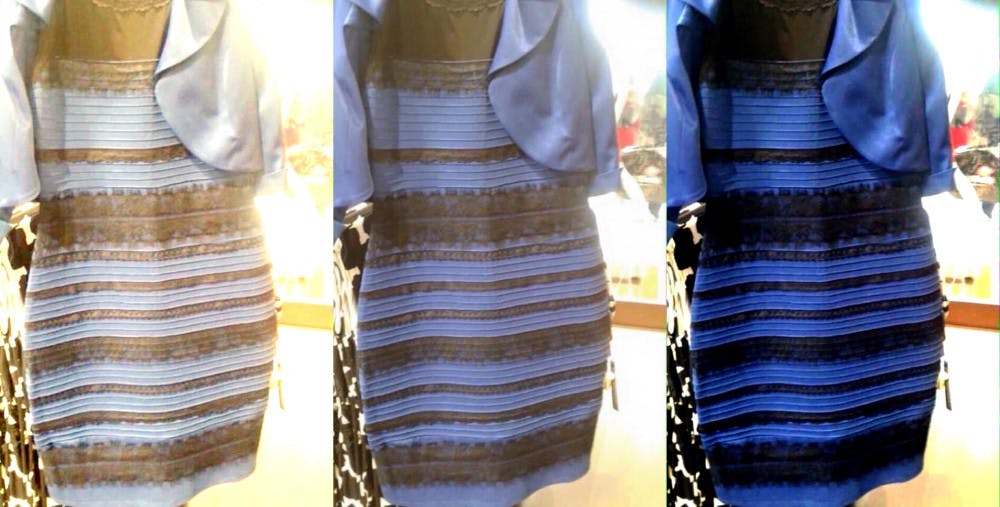By Ellie Schuckman
Opinions Editor
By now, I’m sure everyone has heard about the dress. That’s right, the infamous picture causing friendships to be ruined and people to question their own eyesight. But how has one picture of a hideous dress managed to spread around the world?
Social media.
On Thursday, Feb. 26, the world was suddenly divided. Tumblr, Twitter, Facebook, Instagram, YikYak and Youtube became plastered with debates about the true color of a dress — some saw white and gold while others saw blue and black.
Walking into Eickhoff Hall was like stepping into a war zone — the heated arguments from each table rang with screams of “white and gold” vs. “blue and black.” In the past week alone, reports have surfaced regarding the picture’s origin, simply causing more debate.
The picture was first posted on Tumblr by Caitlin McNeill, a 21- year-old from Scotland, according to businessinsider.com. She explained that the dress, which is blue and black, was worn to a friend’s wedding by the mother of the bride. Debates about the color first began when the now famous photo was sent to the bride.
“When my friend showed the dress to her fiancé, they disagreed on the color,” McNeill said in the same article. “All of our friends disagreed.”
The picture was then posted on Facebook and Tumblr, where others began to comment about the color. It didn’t take long before it took off virally.
People the world over are now obsessed with the dress, prompting psychological analyses and coverage in top-tier publications like the New York Times. But the dress obsession has highlighted an underlying issue — the fragile influence of social media.
In the past few years, we have seen a drastic rise in the amount of people tweeting and posting to other media outlets. All that it takes is one picture to get a few retweets, and suddenly it’s a viral hit. However, there is a thin line between virtual obsessions and reality.
According to Forbes.com, Internet Use Disorder may soon be listed as an actual mental health disorder. Psychologists at the University of Albany have recently found that social media itself is not only addictive, but those who use it excessively may be at a higher risk for substance abuse, according to a Huffington Post article from December 2014.
Now, that’s not saying that a picture of a lousy dress is going to cause a rise in hard-drug use. It’s simply the principle of the matter.
As a society, we are addicted to social media and often latch onto new ‘stories,’ yet we rarely see the harmful side effects of overusing technology. Of course, there are benefits of news being delivered within a moments notice via Twitter, but people must also realize that constantly having their faces locked onto screens is unhealthy to say the least.
It is mind-numbing how a picture originally posted on Facebook not only spread within a week around the globe, but also caused such uproar and heated arguments between friends — all regarding what color each individual saw.
Scientists have even stepped forward offering their opinions on the apparent color differences seen by many. According to USA Today, those who see blue and black are seeing the photo as overexposed, while those who see white and gold view it as underexposed.
“Color is our perception — our interpretation of the light that’s in the world,” said Arthur Shapiro, a professor at American University who specializes in visual perception, in a USA Today article.
No matter what color the dress truly is, the fact that it spread so far so quickly and caused such fierce debates, is proof of the power of social media.
While there are definite upsides to social media, the negative effects must be addressed, so individuals can be wary of their use.
Social media has drastically become an obsession, an outlet highlighting the often blurred line of virtual worlds and reality.







